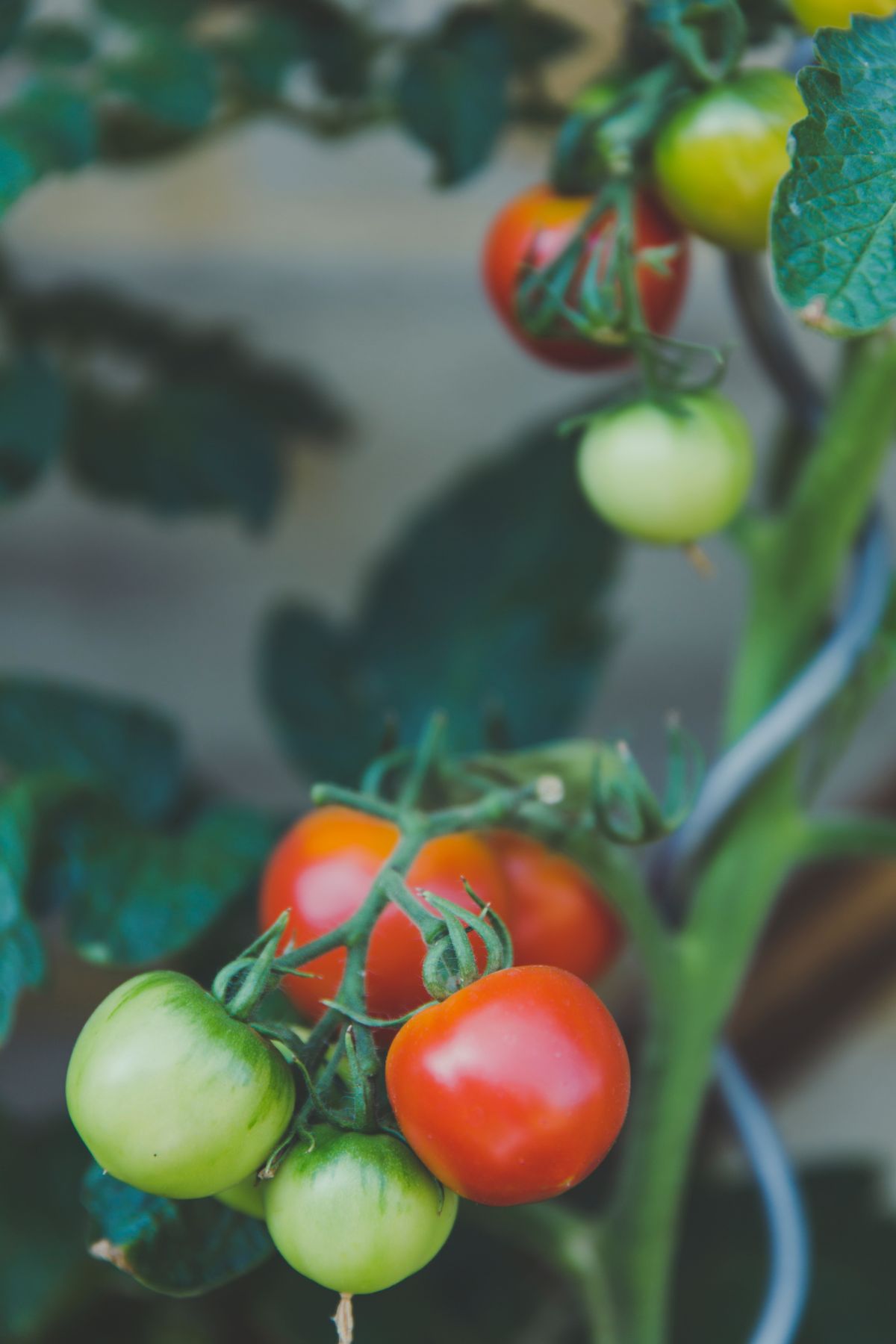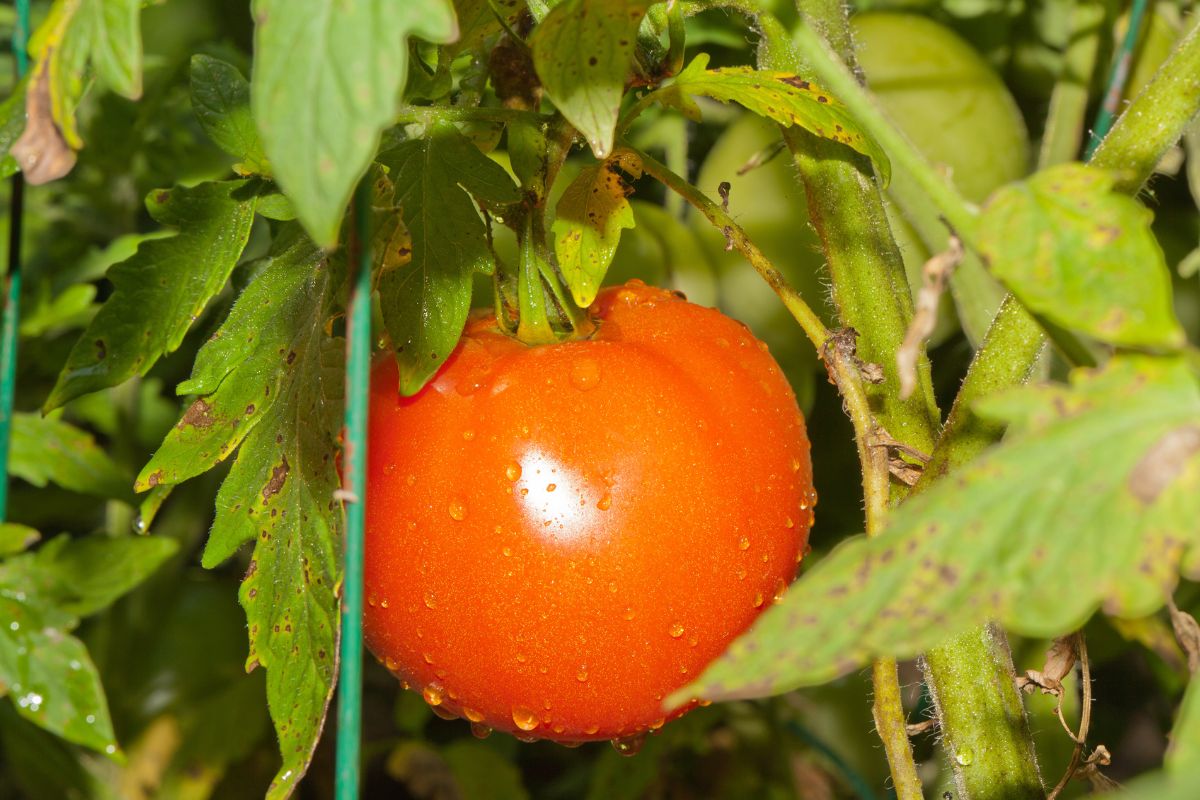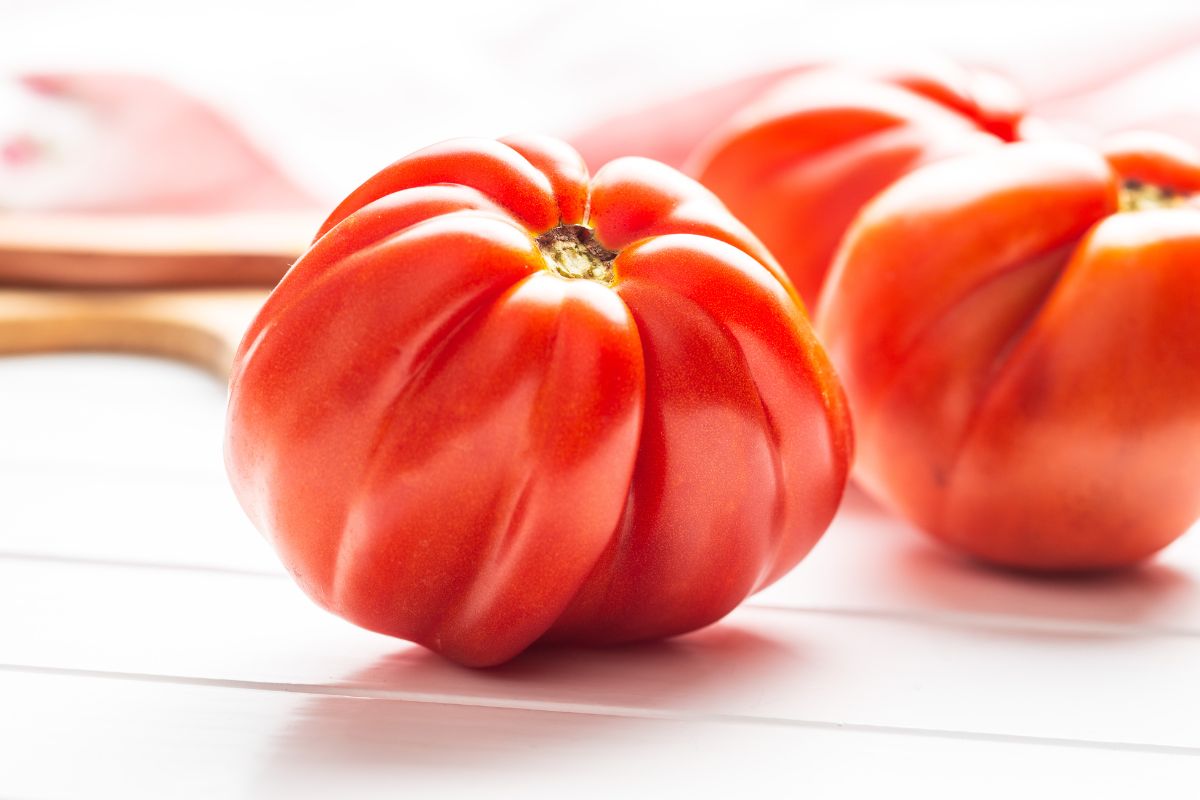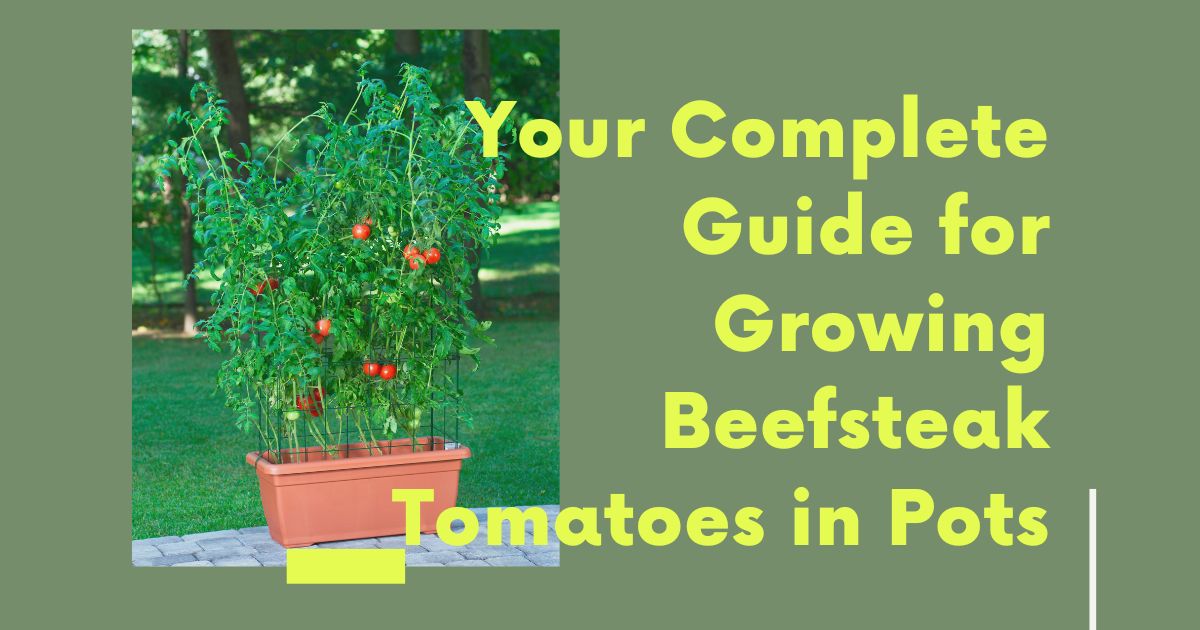What is a Beefsteak Tomato?
One of the largest cultivars of tomatoes is the beefsteak tomato, which weighs up to 15.9 ounces (450 grams). Growing beefsteak tomatoes in pots can be a worthy venture. The majority are pink or red, with several little seed compartments scattered throughout the fruit, and may have distinct ribbing resembling old pre-Columbian tomato types.
Beefsteak tomatoes are not as frequently grown commercially as other varieties because they are not as suitable for mechanization as smaller slicing tomatoes.

Ideal Containers for Growing Beefsteak Tomatoes
Larger containers size for tomatoes is preferable. This is the kind of circumstance when size does matter. Your plant might not produce much if you go on the small pot. A pot of 1 to 2 square feet (0.093 to 0.19 square meters) is ideal for just one plant to grow.
Some advise growing herbs beside the tomato plant, but there will be a moisture war between the two. Therefore, growing tomato plants by themselves in a pot is a fantastic idea. In addition, you can use these fabric pots in place of others.
Both biodegradable and non-biodegradable are fabric pots. Because we can reuse them in the future, I believe non-degradable materials are good.
What you Should Know About Growing Beefsteak Tomatoes in Pots
Select the Right Pots
Choose a pot that will hold the plant securely. This will guarantee that your container has enough soil to supply nutrients and water for your plant’s growth. Additionally, a mature tomato plant won’t be able to topple a pot that is big enough. The yields from planting beefsteak tomatoes in a tiny pot might not be satisfactory.
Therefore, a pot of 1 to 2 square feet (0.093 to 0.19 square meters) is adequate for growing a single plant. Contrary to what some individuals may advise, avoid growing your tomato plant near other plants, such as herbs. It would help if you did this to prevent moisture competition between your tomatoes and herbs.
Make sure your container has a sizable drainage hole at the bottom. Place the pot on wood strips or feet and raise it off the deck, patio, or balcony. This will enable adequate drainage and guard against plant roots drying up on hot, sunny days when a hardwood or cement deck gets warm.
Select the Right Soil
Beefsteak tomatoes grow best on loose, mineral-rich soil that hasn’t previously been in use with tomatoes for at least three years. The pH of the soil should be between 6 and 6.8. I think it would help if you used a rich potting mix. Because beefsteak tomatoes are heavy feeders, you will require an appropriate ratio of phosphorus, nitrogen, potassium, and organic matter.
However, this does not imply that you can use clay or sandy potting soil to grow tomatoes successfully. Just modify them before using them. Clay soil has the drawback of being inadequately aerated and prone to flooding. To combat the waterlogging issue, you can add organic manure and topsoil.
Making holes on the sides of the planting pots will increase aeration. You can also use Perlite to improve clay soil. Perlite has a huge water storage capacity available to the crop. Additionally, it helps aerate the soil. It’s a little bit simpler to fix sandy soil. Use trickle irrigation to ensure that the plant has access to water at all times, and add clay soil to your sandy soil.
Planting Your Tomatoes
There are two simple methods for planting tomatoes:
- Plant seeds that you purchased from a reputable seed supplier. Drying seeds from a previous crop is another option if money is tight.
- Transplant seedlings you’ve purchased from a reputable vendor into your pots.So that only the leaves emerge from the earth and deeply bury the roots of your tomato seedlings. In this method, the crop’s deep-rooted roots can access water, and new fibrous roots reinforce the crop’s grip on the soil.
Root aeration is crucial for beefsteak tomato plants. Drill holes into the pot’s sides or place a tube in the ground with holes. The beginning of March is the ideal time to sow your beefsteak. It is optimal for seeds to sprout in well-drained soil between 60 and 90 degrees Fahrenheit (1.76 and 2.66 degrees Celsius).
In warm soil, they germinate more quickly. Keep the soil moist but not waterlogged until the seeds begin to grow. You can start reducing the amount of watering once the seedlings emerge. Within six to twelve days, germination begins.
Starting with smaller biodegradable glass or plastic containers, you can move your seedlings to a larger pot after they reach a height of around 8 inches (20.32 centimeters).
Provide Support for Your Tomato Plants
You will need to provide your plants with support in the form of stakes because the stems are delicate and cannot bear the weight of the fruits on their own. You will realize that staking can help promote upward growth. You can provide support for the tomato plants by using a trellis.
Watering
Ensure that the water you use does not include any chemicals that could slow down your tomatoes’ growth. You may also use bottles full of water to drip water close to your plant; this will immediately rewet dry parts. The morning is the greatest time to water your tomato plants, and you should do so first.
If you don’t use warm soil to cultivate your tomatoes, you risk developing a disease called root rot. When you water your tomatoes, you should be careful not to get the leaves and stems wet. This is because conditions are more likely to spread on wet leaves and stems, reducing the number of tomatoes your plant produces.
Even when there is a lack of water available, you can see that mycorrhizal may assist in the growth of plants, so you might want to consider purchasing some if you live in a region that experiences water scarcity.
Even during a drought, symbiotic arbuscular mycorrhizal fungi, often known as AMF, help plants grow healthier and more robust, according to a study published in Science Direct.
Spacing
You should plant tomatoes at a distance of 18 inches (45.72 centimeters) from one another, and there should be a gap of at least 24 inches (60.96 centimeters) between rows.
Tomato plants kept too close together are more likely to contract fungal diseases, resulting in decreased crop yields, as stated by the Deep Roots Projects Organization. On the other hand, if the pot isn’t very big, you can get away with planting only one tomato plant.
Pruning Beefsteak Tomatoes
Getting rid of the suckers on your beefsteak tomatoes is one strategy for increasing their overall production. Suckers are nothing more than little branches that develop within the main stem and other established branches of your plant.
Removing suckers from your plant once it has developed its first two leaves is important to prevent them from draining your plant’s resources and resulting in lower yields.
After you have transplanted your seedling, you should immediately begin pruning it; remove every leaf in contact with the ground. You should also remove the drooping leaves. You might also consider removing some of the plant’s leaves as it matures to allow more light to reach the crop beneath them.
Organic Manure and Fertilizers
Add organic manure to the soil and thoroughly combine it before planting your crop. It would help if you amended clayey and sandy soils with well-decomposed organic manure. It would help if you also undertook soil tests to ascertain which nutrients the soil is deficient in. You can add the proper fertilizers to your ground this way.
Sunlight/Light
Tomato plants need at least access to direct sunshine for six to eight hours daily. When growing tomatoes indoors, LED lights are a great alternative to direct sunlight for warming the plants. It is significant to note that one of the reasons tomatoes bloom is that no fruit develops a lack of sufficient sunshine.
Pests and Disease Control
Since you are growing your tomatoes in pots, it may not be a major issue since there isn’t enough crop rotation to prevent the spread of pests and diseases. However, avoid reusing potting soil. Every time you wish to plant new tomatoes, throw away the old soil and use fresh ones.

The Beefsteak Tomato Plant Height
The beefsteak tomato plant, also known as Solanum Lycopersicum, can reach a height of up to six feet, bears edible fruit, and typically weighs more than one pound. The beefsteak tomato plant is the largest of the tomato plants and may produce fruits up to 6 inches (15 centimeters) in diameter.
The Different Varieties of Beefsteak Tomatoes
If you are new to growing tomatoes, it may be a surprise to hear that certain types, like beefsteak tomatoes, include many sub-varieties. For example, The following is a list of just a few of the numerous varieties of beefsteak tomatoes that you can cultivate:
- Pink beefsteak
- Big beef
- Bucking bronco
- Beefsteak VFN
- Marmande
- Beefmaster VFN
- Brandywine (pink heirloom)
- Cherokee purple
- Mortgage lifter
- Black krim
When to Pick Beefsteak Tomatoes
Most beefsteak cultivars need the continuous hot sun to mature. Therefore, these will be the final tomatoes available to harvest from your tomato plants. While color is the most obvious indicator of ripeness, the texture is also quite significant. To the touch, an unripe tomato will feel quite solid, whereas a tomato that has reached its peak of ripeness will be quite yielding.
When fully ripe and ready for picking, a tomato should feel solid when touched lightly with a finger or carefully squeezed, but it should also have some give. You, therefore, be weary about when to harvest beefsteak tomato. Expect to pick most of your beefsteak tomatoes sometime between the end of summer and the beginning of September.
Following planting, beefsteak tomatoes are typically ready for harvest eighty-five days after planting. The plants are ready to harvest when the fruit on your beefsteak tomato plants has a red color that ranges from medium to deep. Examine the underside of the tomato to see if the color indicates that it is ready to eat.
What are Beefsteak Tomatoes Good for?
These tomatoes offer a novel take on a variety of culinary applications, including juicing, artisan sandwiches, salsas, dips, and cold and hot sauces. You can also use them in baked goods such as sweets and pies ( they’re fantastic!), and they make a great substitution in any recipe that calls for granny smith apples.
How do you consume tomatoes the size of beefsteaks? Serving suggestions for the beefsteak tomato include the following:
- You should consume raw beefsteak, cut, and hamburgers and sandwiches.
- Dice the beefsteak so that you may use it in salads, salsas, or on top of chili.
- You can prepare the beefsteak by broiling, grilling, stuffing, or using it as an ingredient in stews, casseroles, gumbos, or jambalayas.
How Many Beefsteak Tomatoes Per Plant?
As healthy new tomato plants grow in your spring vegetable garden, you will immediately begin visualizing what the harvest in the fall will be like. Like any other person who grows tomatoes, you might be curious about the yield of a single plant in terms of tomatoes. You can harvest 20 to 90 tomatoes from a single plant.
You will need to maintain specific conditions and be aware of the yield you may anticipate to have a successful harvest. These ideal conditions include having an adequately illuminated garden, preserving a perfect soil pH, providing adequate plant support, and much more.
Why Grow Beefsteak Tomatoes in Pots?
Tomatoes prefer warm climates. You also gain an advantage by growing tomatoes in a pot. Why? Because it makes it simple to bring your tomatoes indoors when it snows to avoid frost damage.
However, if you are growing tomatoes in a garden, your only option is to spray the plants and hope against hope that your beefsteak tomatoes will survive the dreadful weather. A further benefit of tomatoes in pots is that you can easily utilize LED lights to keep your tomatoes warm during chilly months.
A Purdue University study found that growing tomatoes under LED lights throughout winter lowers greenhouse energy expenditures. Additionally, LED won’t alter your tomatoes’ flavor, appearance, or acidity.
They will still have the same flavor as tomatoes grown in the sun. Beefsteak tomatoes require time to grow and ripen before temperatures become too hot, so be sure to plant them early.
Common Beefsteak Tomato Pests
The failure to rotate crops contributes to the development of pests and diseases; however, given that you are cultivating your tomatoes in containers, this may not be a significant issue for you. Despite this, you should never recycle your potting soil. When you wish to plant new tomatoes, you should get rid of the old dirt and replace it with fresh soil.
The following are some of the insects and other creatures that prey on tomatoes:
- Tomato hornworms
- Aphids
- Rodents
- Flea beetles
You can control pests with neem oil or other insecticides.
Diseases Associated With Beefsteak Tomatoes
Anthracnose
You will find Anthracnose symptoms on fruits. However, it may affect the plant’s stem, leaves, and roots. It creates sunken lesions on the fruits. The seasons of warm weather are when this illness manifests. If you wish to fight this disease, stay away from sprinkler irrigation while the fruit is beginning to ripen.
Sunscald
The fruit impacts itself, becoming white, papery, and flattened. The fruit may spoil due to mold growing in the impacted area. It is a result of prolonged sun exposure. To solve this issue, avoid exposing your fruits to the sun for an extended period.
Bacterial Spots
The tomato fruit has a few tiny, round, black dots. The fungus Alternaria linariae and A are the ones that cause this sickness, solani. Use pathogen-free seeds or tolerant tomato cultivars to manage this.
Bloom End Rot
At the fruit’s bloom end, there is a dark, wet patch. Blossom end rot causes a lack of calcium and drought stress followed by an abundance of soil moisture, unbalanced pH, or excess nitrogen.
To avoid this, plant your tomatoes in soil that has a pH between 6.2 and 6.8 and make sure it has a sufficient supply of calcium by adding limestone and gypsum. To prevent drought stress, use mulch and timely irrigation. Use nitrogenous fertilizers sparingly.
Leaf folds
The leaves twist upward and have a tough, leather-like texture. High temperatures, protracted periods of soggy soil conditions, or dryness are the leading causes of leaf curling. Continuous tomato pruning may also be to blame. Ensure you plant your tomatoes in well-drained soil and irrigate during dry spells to avoid leaf folding.

We’ve Got You Covered
Growing beefsteak tomatoes enables you to plant tomatoes in your yard even if you do not have a lot of room available for doing so, but it is also very simple. In addition, it enables you to move your plants indoors, where they will be safe from any harm caused by frost or any other harsh conditions.
